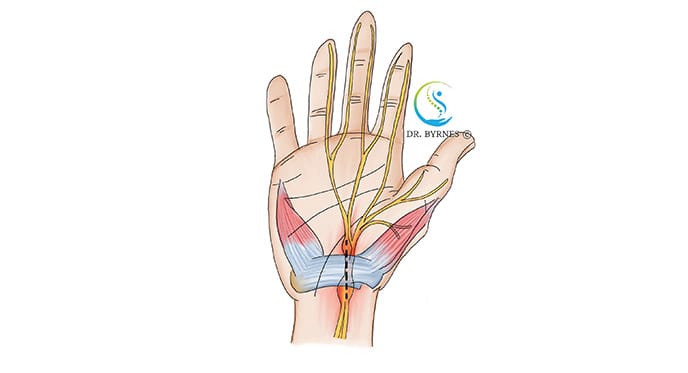
Carpal tunnel syndrome (CTS) commonly affects the hand and wrist, causing pain, numbness, and tingling due to pressure on the median nerve.
Surgical treatment may be recommended when conservative treatments, such as wrist splints and anti-inflammatory medications, fail to provide relief.
This article will discuss carpal tunnel release surgery in detail, including anaesthesia options, patient experience, aftercare, and recovery.
Carpal tunnel release surgery is a procedure designed to relieve pressure on the median nerve, which is compressed within the carpal tunnel in the wrist.
The surgery involves cutting the transverse carpal ligament, which forms the roof of the carpal tunnel. This creates more space for the median nerve and alleviates symptoms.
Carpal tunnel release surgery involves cutting the transverse carpal ligament to relieve pressure on the median nerve.
The surgeon makes a small incision in the palm of the hand, about 3 centimetres long. The skin, fatty tissue, and fascia are carefully separated to expose the transverse carpal ligament. The ligament is then cut, creating more space for the median nerve and alleviating symptoms.
Once the ligament is released, the surgeon closes the incision with sutures.
Several anaesthesia options are available for carpal tunnel release surgery:
The surgeon and medical staff will monitor your comfort level and provide additional medication or support as needed.
After surgery, you will likely experience some pain and swelling, which can be managed with discharge pain medications. It is important to keep your hand elevated as much as possible to reduce swelling for 2-3 days.
You will be encouraged to start gentle finger and wrist exercises within a few days of surgery to improve flexibility and prevent stiffness.
Full recovery and return to normal activities may take several weeks to a few months, depending on the severity of your condition and your individual healing process.
As with any surgery, there are risks and potential complications associated with carpal tunnel release surgery. These may include:
However, complications are relatively rare, with a reported overall complication rate of 3.0% in a large study of over 13,000 carpal tunnel release surgeries(1).
Open carpal tunnel release surgery is a safe and effective treatment option for patients with carpal tunnel syndrome who have not found relief through conservative treatments. The procedure, anaesthesia options, and recovery process are tailored to each patient's needs.